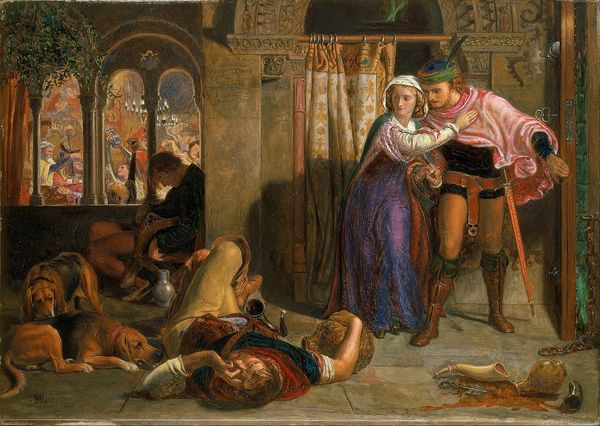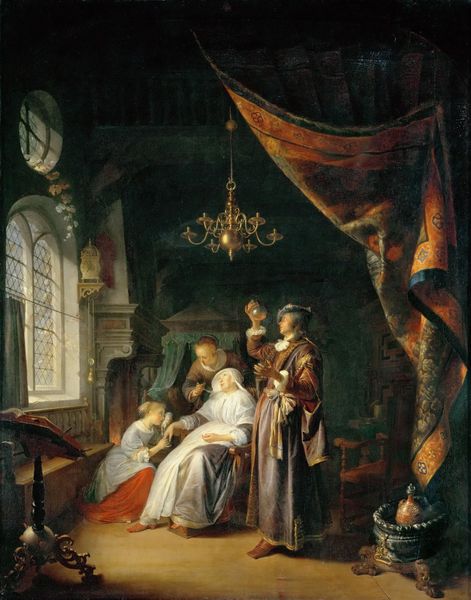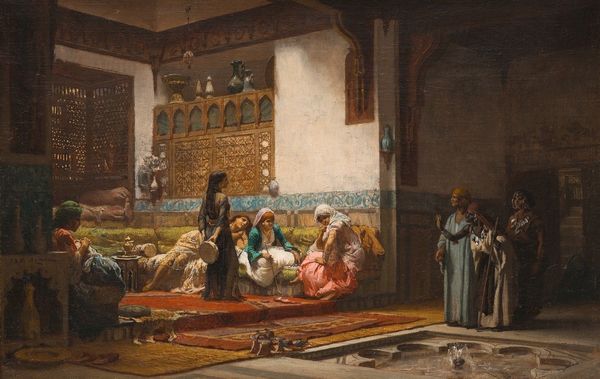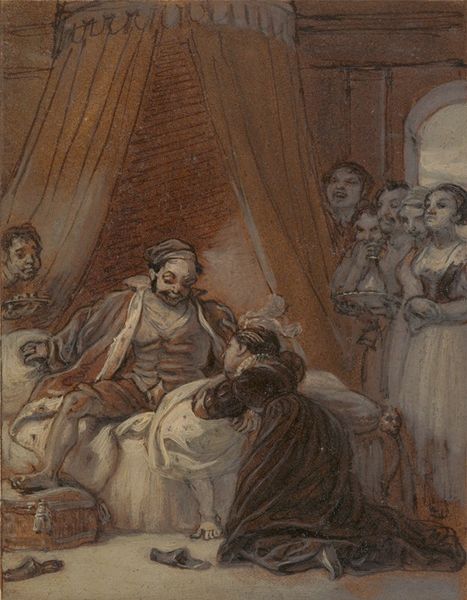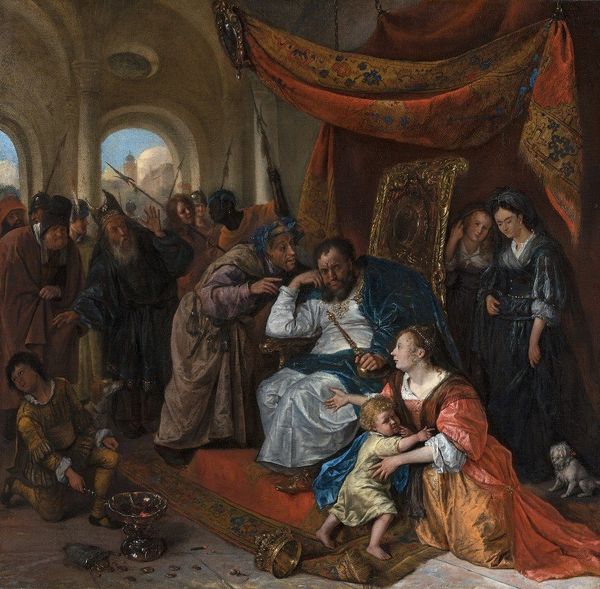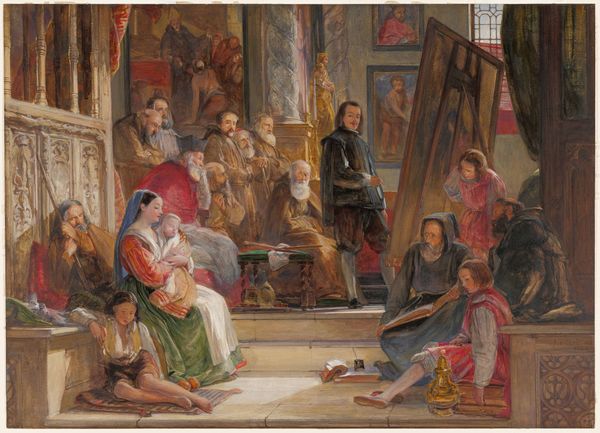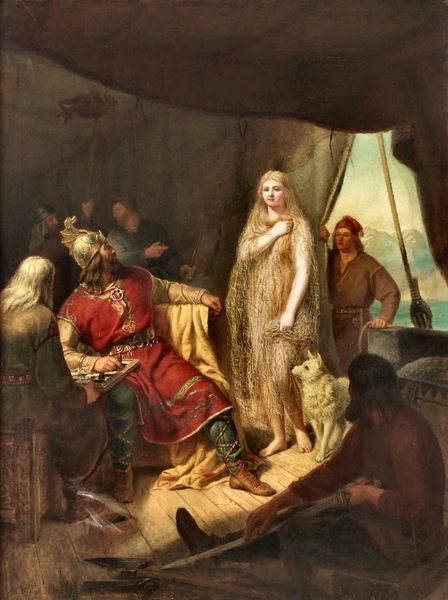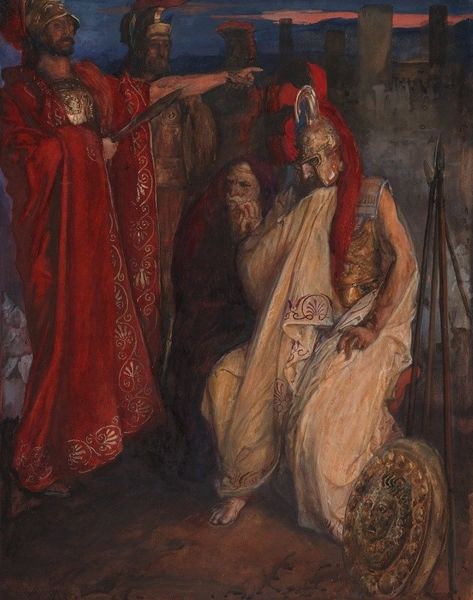
Copyright: Public Domain: Artvee
Curator: What strikes me immediately is the way light seems to pool within the scene. It's so rich. Editor: Indeed. This is John Frederick Lewis's "Roman Pilgrims," painted in 1854 using watercolor and gouache. The composition invites us to consider the intersection of piety, tourism, and societal hierarchies of the mid-19th century. Curator: Tourism feels like the key word. I'm drawn to the implied contrast between the reverent locals and the perhaps more leisurely observance of the clearly well-to-do tourists, whose very presence shapes and commodifies this sacred space. What commentary is Lewis offering on cultural consumption? Editor: Precisely. It speaks volumes about the Grand Tour era, doesn't it? How religious spaces became part of the circuit for the privileged, influencing their behavior and the behaviors of those whose spaces they were invading, so to speak. This interest in the exotic, in cultural 'authenticity,' directly fed into imperial projects. Note how Lewis differentiates the costumes, placing them deliberately. The seated man on the left with his traveling child is likely an upper-class gentleman, perhaps British given Lewis's biography, and their attire denotes status, implicitly juxtaposed against the dress of local women kneeling in prayer. Curator: I’m curious, too, about the perspective offered on gender within this complex exchange. The composition largely features women; are we meant to interpret this observation about women’s participation in religious and cultural encounters differently? Editor: Absolutely. Lewis was depicting the observed realities of his time. Religious spaces, pilgrimage and even early tourism provided opportunities for women to navigate outside their typical roles, as well as spaces where roles were perhaps cemented, and perpetuated. It presents a very gendered religious landscape, open to varying interpretation, that is mediated by class and nationality. Lewis positions us, as viewers, as modern participants in these themes and questions. Curator: So much here to unpack. I now feel newly critical about modern tourism and its impact. Editor: The work, ultimately, encourages us to observe and question the continuing dynamics of cultural exchange, power and identity.
Comments
No comments
Be the first to comment and join the conversation on the ultimate creative platform.


